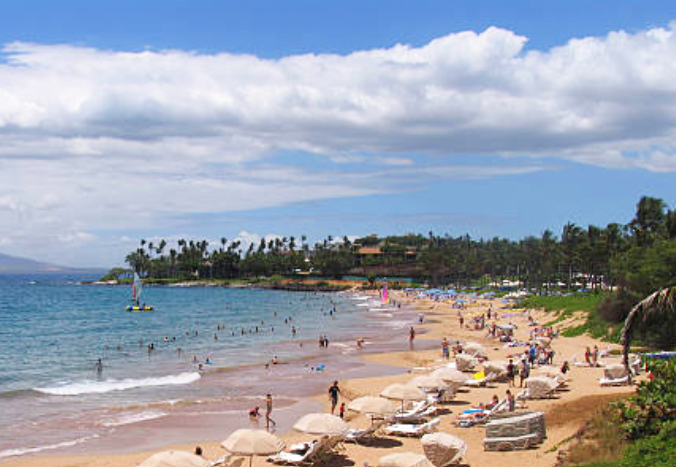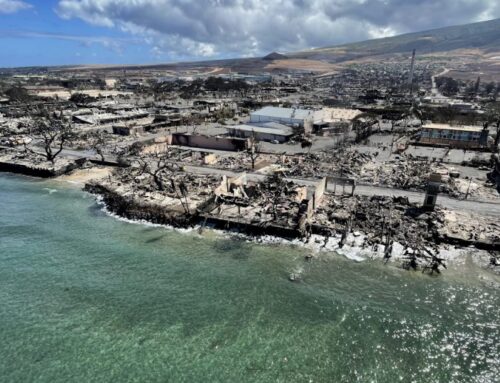For over a year, we have yearned to get things “back to normal” in our daily lives. But there is one “normal” that many would like to see addressed in a different way, and that is the impact from the dramatic rise in tourism. With visitor numbers returning to pre-pandemic levels, complaints of crowded beaches and roads, strained infrastructure and impacts on natural resources have risen once again.
Last month, Maui’s Mayor informally asked airlines for fewer tourists. Even with partial COVID-19 restrictions still in place, Maui’s visitor numbers are at pre-pandemic levels already. The Hawaii Tourism Authority said the average daily census showed there were 58,412 visitors per day on Maui in May, 2021. In comparison, there were 60,389 visitors per day in May 2019. With arrival numbers still rising, there is concern that continued growth will ultimately have a negative effect on both the tourism industry and our island way of life for the 168 thousand residents that call Maui home.
Finding a Balance with Tourism
 Clearly, tourism brings jobs, investment and economic benefits to destinations. However, governments are learning there should be limits to tourism expansion to avoid the pitfalls.
Clearly, tourism brings jobs, investment and economic benefits to destinations. However, governments are learning there should be limits to tourism expansion to avoid the pitfalls.
Overtourism describes destinations where local citizens and visitors feel that there are too many visitors and that the quality of life in the area or the quality of the experience has deteriorated unacceptably. Tourists have difficulty experiencing landmarks because of the crowds, such as the road to Hana, Molokini Crater and popular beaches or Haleakala at sunrise, and fragile environments become degraded. This is important since the County of Maui General Plan 2030 acknowledged that the health of the island’s economy is directly tied to the health of the island’s natural environment.
In an effort to slow down tourism impacts, the Maui County Council recently passed a temporary moratorium on building of new vacation rental units, including hotels and condominiums, in South and West Maui. Community leaders are careful to say its not about rejecting tourism all together, but are seeking more balance with community plans. It’s a fine line to tread. If actions taken by an area cause tourist arrivals to decline suddenly, there would be considerable economic repercussions.
However, Maui is not the only destination feeling the affects of being overloved and trying to decide how to deal with it. Overtourism is global issue, and managing the flow of tourists is not an easy task. Some cities have introduced new visitor taxes, regulations and fines for violations. Demarketing a destination is also popular, as is focusing on attracting fewer, high-spending and low impact tourists, rather than large groups.
Saying they want to see more tourism management and “not more promotion” the County of Maui Council shaved $2M from the Maui Visitor’s Bureau’s proposed budget in 2021, with $200,000 of the remaining $1M specifically earmarked for visitor education. In 2022, that education component jumps up to $500,000 through tourism management grants.
Labor Shortages Slow the Recovery
 Even though people are traveling enforce, labor shortages in the hospitality industry across the country mean longer wait times at restaurants or shortened business hours and trimmed services elsewhere.
Even though people are traveling enforce, labor shortages in the hospitality industry across the country mean longer wait times at restaurants or shortened business hours and trimmed services elsewhere.
Even before the pandemic, there was a shortage of applicants for the travel and tourism industry nationwide. That was followed by massive layoffs during the pandemic. Businesses have been struggling to rehire enough staff to operate at full capacity since. Many laid off workers left Hawaii during the pandemic, making rehire nearly impossible. Coupled with the rising cost of living on island, including lack of affordable rental housing, recruitment remains a challenge.
Thoughtful Community Involvement
 A new series of community town halls, launched by County of Maui Council member Kelly King, seeks community input on the path forward in sustainable tourism. The first meeting included a panel discussion with King, Hawaiian environmental activist Ekolu Lindsey,a director from Maui’s volunteer Climate Action Advisory Committee Dr. Genesis Young, and Orion Cruz, a Maui attorney who worked with the government of Palau on tourism issues. Faced with devastating environmental impacts from overtourism, the nation of islands in Micronesia created a convention-busting campaign, committing every visitor to look after the local environment and culture. This is the first eco-initiative campaign of its type in the world, requiring a signed passport pledge by all visitors to Palau. And it’s working.
A new series of community town halls, launched by County of Maui Council member Kelly King, seeks community input on the path forward in sustainable tourism. The first meeting included a panel discussion with King, Hawaiian environmental activist Ekolu Lindsey,a director from Maui’s volunteer Climate Action Advisory Committee Dr. Genesis Young, and Orion Cruz, a Maui attorney who worked with the government of Palau on tourism issues. Faced with devastating environmental impacts from overtourism, the nation of islands in Micronesia created a convention-busting campaign, committing every visitor to look after the local environment and culture. This is the first eco-initiative campaign of its type in the world, requiring a signed passport pledge by all visitors to Palau. And it’s working.
Input from native Hawaiian community members and businesses is also being sought. A survey with over 2000 participants showed that Hawaiian community members envision a post-COVID-19 local economy that prioritizes diversified industries promoting sustainability and support residents’ basic needs. The survey and other research was provided through a collaboration between the Office of Hawaiian Affairs, Kamehameha Schools, and Liliʻuokalani Trust and in partnership with the Hawaiʻi Leadership Forum, Kupu, and the Native Hawaiian Chambers of Commerce.
A Diversified Economy
 Finally, if the pandemic taught us one thing, its that Maui, and Hawaii in general, is over reliant on tourism. But we knew that already. While there was a lot of talk during the shut down about economic diversification, there was not a lot of action. “We’re going to go back to the same old ways of milking the tourism cow,” said state Sen. Glenn Wakai.
Finally, if the pandemic taught us one thing, its that Maui, and Hawaii in general, is over reliant on tourism. But we knew that already. While there was a lot of talk during the shut down about economic diversification, there was not a lot of action. “We’re going to go back to the same old ways of milking the tourism cow,” said state Sen. Glenn Wakai.
There are some interesting studies on the topic from the UHERO- the University of Hawaii Economic Research Organization. Ideas range from attracting Fortune 500 companies or increasing commercial agriculture production to developing high tech companies. We just need to put ideas into action.






